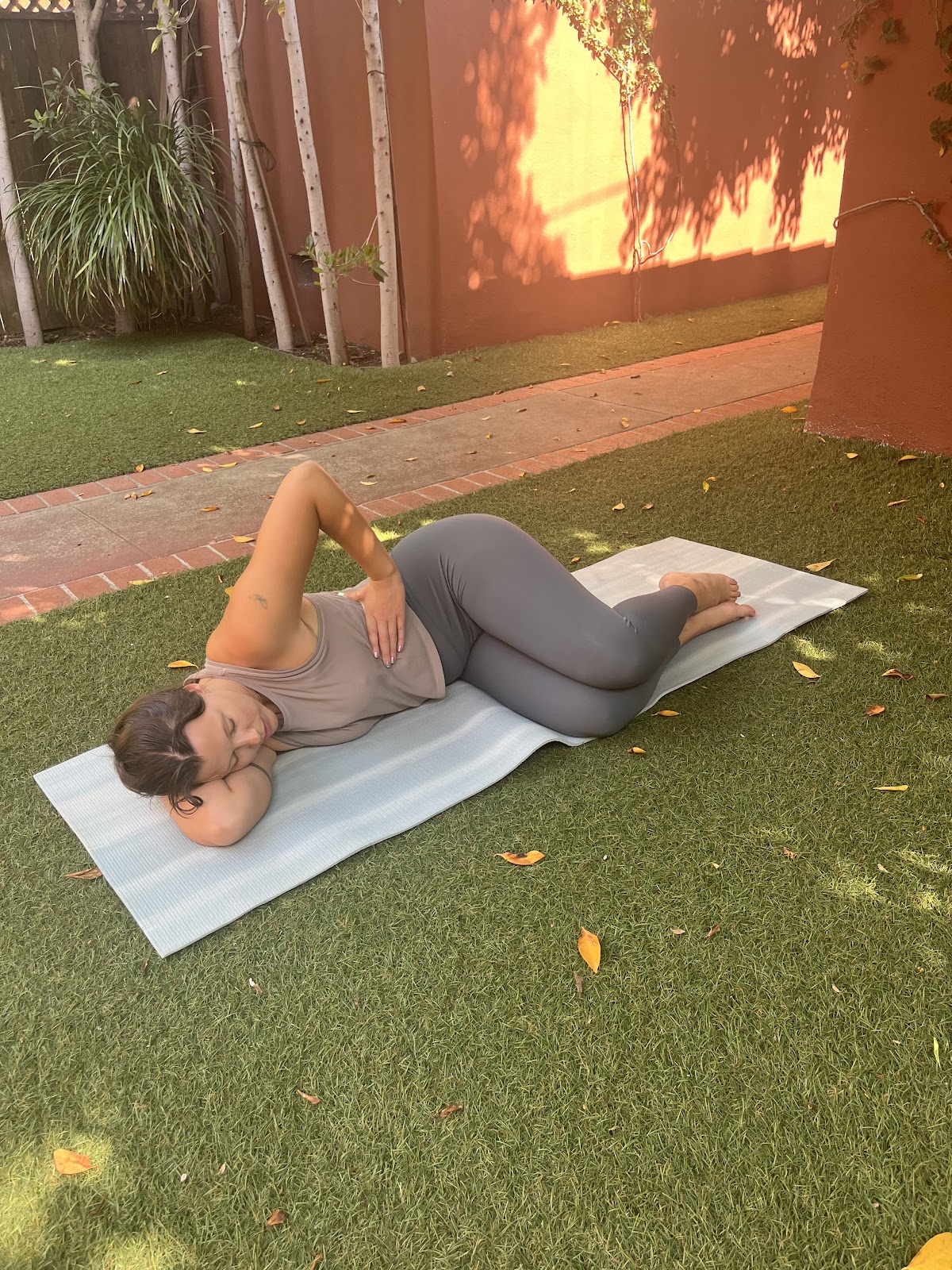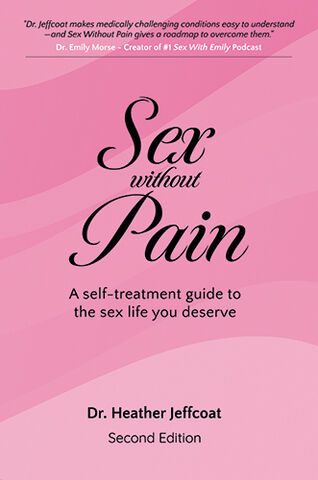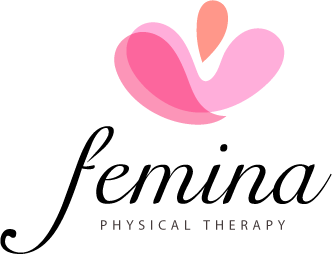
The Femina Physical Therapy Blog
Featuring original articles by our staff about current events and trends
Explore our insightful blog articles on pelvic health, where we delve into essential topics that empower and educate. From understanding pelvic floor disorders to strategies for conquering infertility, our content is designed for those seeking knowledge and support. We discuss the latest research, expert advice, and practical tips to enhance your well-being and foster a deeper connection to your body.
Featured From the Blog:
Restorative 20 Minute Home Yoga Practice For Chronic Pelvic Pain

Yoga Practice For Chronic Pelvic Pain Can Be a Very Helpful Routine
As stated in my last blog post, yoga can be so beneficial as a pain management tool due to its ability to modulate the sympathetic nervous system3,4 which plays a large role in chronic pain. The exact mechanism of how yoga helps with chronic pain is still being studied, however, it is reasonable to believe the full body relaxation promoted by a yoga practice helps to decrease tension in key muscle groups- including the hips and pelvic floor which are often tight in people with chronic pelvic pain.
Currently, evidence has mostly focused on one hour long practices as an intervention, although there are some studies that report improvements in pain with shorter practices, such as the routine below. As with any mobility/stretching routine, benefits will be seen with more frequent practice, however even twice weekly can help decrease pain.
Read more: Restorative 20 Minute Home Yoga Practice For Chronic...
Vulvovaginal Moisturizers: Who Needs One & Choosing the Right One

Choosing the Right Vulvovaginal Moisturizer
Assuming you need one, make sure it's got the right ingredient list
There are many reasons why those born with female anatomy may require the use of a vulvovaginal moisturizer throughout their lifetime. As you age, the vaginal and vulvar tissues tend to become drier and less elastic. This change is typically seen around the time one goes through menopause due to the drop in estrogen that occurs. The vulvovaginal tissues are very sensitive to hormonal changes and estrogen is the hormone that controls vaginal lubrication, as well as tissue elasticity and thickness.
Read more: Vulvovaginal Moisturizers: Who Needs One & Choosing the...
Treating Bloating and Abdominal Distension: a Multi-Disciplinary Team

Why a Multi-Disciplinary Team is Best for Treating Bloating and Abdominal Distension
Bloating, abdominal distension, loose stools, constipation, abdominal or pelvic pain, fatigue, brain fog, weakness, nutritional deficiencies… these symptoms may be caused by a variety of gastrointestinal or pelvic conditions. If you are experiencing any of these symptoms, this article is a good place to start when deciding who to have on your care team, and what treatments can help!
- Details
- Written by: Anna Larson, PT, DPT
- 213 Views

Physical therapy visits prior to childbirth, often referred to as birth preparation or "push prep" visits, play a crucial role in preparing expectant parents for delivery. These sessions are designed to equip pregnant individuals with the skills, strength, and knowledge necessary for a smoother birthing process. Whether planning for a natural delivery or a C-section, engaging in birth prep can significantly enhance overall birthing experiences and outcomes.
In this article, we will explore the concept of Birth Prep in detail, discussing what it entails and how it contributes to the childbirth process. We'll look into the various benefits of incorporating physical therapy into prenatal care and address the relevance of Birth Prep even for those anticipating a C-section.
What is Birth Prep (Push Prep), and What Can I Expect from my Visits?
Birth preparation with our physical therapists is a program that gets you more comfortable during pregnancy and works on issues that have been identified to optimize your birth experience.
During these classes for pregnant women, your physical therapist will:
- Provide education to the expecting patient about the birthing process
- Alleviate any discomfort related to pregnancy
- Teach you how to get in touch with your pelvic floor muscles
- Provide tools and practices to help prevent severe perineal tearing
- Help prepare the birthing person for a better postpartum recovery.
Why Should Birth Prep Be Included in My Prenatal Care?
The following are five key reasons why birth prep should be included in your prenatal care:
1. Education about Labor
Personally, this is one of my favorite parts of a push-prep visit. We get to take our time discussing what each of the stages of labor entail, helpful movements and positions for each stage of labor, and even how your birthing partner can help during this process.
2. Relieves Common Pregnancy Discomforts
Pregnancy can cause a variety of aches and pains due to hormonal changes, the growing weight of the baby, and changes in posture. Some common issues include:
- Back pain
- Pelvic pain and pelvic girdle pain (PGP)
- Sciatica
- Neck and shoulder tension
- Carpal tunnel syndrome
Get ahead of the pain when it begins, not when you are postpartum and have a whole new human to take care of! Many of my patients are told, “your pain will just go away when you deliver the baby”. Sometimes this is the case, but many times aches and pains can linger or even get worse, and it is best to assess and begin to improve your pain and function in the prenatal period. Techniques such as manual therapy, therapeutic exercises, and posture correction can be helpful.
3. Awareness of the Pelvic Floor
Labor and delivery requires significant physical effort, however, during actual labor, the pelvic floor just needs to get out of the way and let your uterus do its job! During our birth prep program, we teach you how to properly contract, and more importantly, relax your pelvic floor so that coordination of these muscles is automatic to you when the time comes! Physical therapy can also help you strengthen these muscles, as well as your core, back, and glutes to help through the rest of your pregnancy and with postpartum recovery.
- Pelvic floor exercises (like Kegels) can help prepare the muscles for the pressure of labor and delivery, reducing the risk of incontinence both during pregnancy and after childbirth.
- Core strengthening enhances your ability to maintain posture and stability during labor and supports your changing posture during pregnancy.
- Lower back and hip strengthening helps reduce discomfort and improve mobility as the baby grows.
4. Reduces the Risk of Severe Tears During Labor
During a birth prep visit, we will teach you numerous techniques that have been proven in research to help decrease your risk of severe tearing – yay! Severe tears (grade 3 and 4) lead to more complications postpartum, and there is really no downside to incorporating these practices into your prenatal wellness routine. Some of these tools we will go through include:
- Optimal birthing positions to decrease your risk of tearing (Aasheim) through optimal labor positions.
- Breathing techniques both leading up to labor and during labor to decrease the strain on your pelvic floor
- Perineal massage, starting at 34 weeks pregnant have been shown to decrease the risk of severe tears (Beckman, Aasheim). While perineal massage is not a guarantee that you will not tear at all, it can help with the stretching sensation and discomfort of stretch of these tissues to help your body prepare for the sensation during vaginal child birth.
Your physical therapist can also provide instruction on specific birthing positions that will be best for you, depending on any injuries you are dealing with currently. For example, if you have labral tears in your hips, you would be advised on avoiding the classic lithotomy position (on your back with your hips and knees flexed past 90 degrees).
5. Prepares You for Postpartum Recovery
While the focus during pregnancy is often on preparing for labor, physical therapy also plays an important role in preparing for postpartum recovery. Many women experience significant physical changes after childbirth, including pelvic floor dysfunction (such as incontinence of bowel and bladder), abdominal weakness, and poor posture due to the stress of pregnancy and delivery.
By strengthening key muscle groups and maintaining flexibility before delivery, physical therapy can reduce recovery time after birth, improve your strength, and decrease your chances of developing pelvic floor dysfunction, including incontinence. Additionally, it can aid in diastasis recti recovery, a condition where the abdominal muscles separate during pregnancy.
Will Birth Prep Help Me If I’m Having a C-section?
Absolutely! As we discussed above, pelvic floor dysfunction can be identified while you are still pregnant. These issues can be addressed during pregnancy and lay down a better foundation for postpartum recovery. You can learn more about postpartum recovery after a c-section here.
Get Started with Our Birth Prep Program
Pregnancy is a time of immense change, and taking care of your body is crucial for both your well-being and that of your baby. Birth prep offers a range of benefits, from relieving common pregnancy discomforts to preparing your body for labor and helping you recover more quickly postpartum. If you’re expecting, consider adding a birth prep visit or two before your delivery. Your body—and your baby—will thank you! All of our therapists at Femina Physical Therapy are specialized to help you during your pregnancy and beyond. Reach out to get started with our classes for pregnant women!
Resources
Aasheim V, Nilsen ABV, Reinar LM, Lukasse M. Perineal techniques during the second stage of labour for reducing perineal trauma. Cochrane Database Syst Rev. 2017;6(6):CD006672. Published 2017 Jun 13. doi:10.1002/14651858.CD006672.pub3
Beckmann MM, Garrett AJ. Antenatal perineal massage for reducing perineal trauma. Cochrane Database Syst Rev. 2006;(1):CD005123. Published 2006 Jan 25. doi:10.1002/14651858.CD005123.pub2
Neta JN, Amorim MM, Guendler J, Delgado A, Lemos A, Katz L. Vocalization during the second stage of labor to prevent perineal trauma: A randomized controlled trial. Eur J Obstet Gynecol Reprod Biol. 2022;275:46-53. doi:10.1016/j.ejogrb.2022.06.007
- Details
- Written by: Heather Jeffcoat, DPT
- 324 Views
- Details
- Written by: Heather Jeffcoat, DPT
- 377 Views
- Details
- Written by: Heather Jeffcoat, DPT
- 325 Views
- Details
- Written by: Heather Jeffcoat, DPT
- 162 Views
Myofascial release therapy is an effective approach for addressing various pain-related issues. By focusing on reducing tension in the fascia, a type of connective tissue that surrounds the muscles, this therapeutic method has gained popularity for its ability to improve well-being. Fascia can be thought of as a web that holds everything together; when it tightens or becomes damaged, discomfort and pain may result. Myofascial release provides relief by relaxing and loosening the fascia, leading to smoother movements and less pain.
People often seek myofascial release therapy for pain relief, especially in cases involving stubborn trigger points. These are often likened to knots in the muscle tissues and can create a sore feeling that interferes with everyday activities. Addressing these trigger points is key to experiencing the full benefits of the therapy. With targeted techniques aimed at alleviating these specific areas, individuals often find significant relief, making myofascial release therapy a valuable tool in their pain management toolkit.
Understanding Trigger Points
Trigger points are small, localized areas within muscles that can cause significant discomfort. They are often described as sensitive spots, sometimes referred to as knots, that form due to muscle overuse, stress, or injury. These points act like traffic jams in the muscle fibers, with a build-up of tension that needs to be released. Understanding how these develop is the first step in addressing them effectively.
Typically, trigger points arise when muscles are subjected to repetitive strain or poor posture. For example, sitting at a desk for long periods with little movement can lead to small tears or inflammation in the muscle fibers. As these persist, they form tight knots that can cause sharp, aching pains that may even radiate to other parts of the body. Common symptoms include headaches, neck pain, and lower back pain, which are often linked to trigger point activity.
Recognizing the hallmark signs of trigger points is crucial for tackling these issues. Stiffness in the affected area, limited movement, and persistent muscle soreness are tell-tale signs. This awareness helps in seeking appropriate treatment methods, such as myofascial release therapy, that directly target these points, offering a path to relief and improved muscle function.
How Myofascial Release Therapy Works
Myofascial release therapy is all about relaxing tight muscles and releasing trigger points. It focuses on hands-on techniques to stretch and manipulate the fascia and the underlying muscle tissues. This therapy involves applying gentle, sustained pressure on the myofascial tissue to unlock any tightness and ease tension in the affected areas.
Therapists use their hands to identify and work on areas of tension. They slowly stretch and apply pressure, giving the fascia time to relax and stretch, helping to restore normal movement. Sometimes, tools like foam rollers or balls may supplement hands-on techniques for deeper pressure on the trigger points. Over time, this consistent treatment can lead to decreased pain and improved mobility.
The effects on muscle tissue and fascia are significant. As the fascia relaxes, blood flow improves, allowing nutrients to reach previously restricted areas. This process not only alleviates pain but also enhances the body's natural capacity for healing and repair. As the fascia becomes more flexible, it often translates to better overall movement and function.
Benefits of Myofascial Release Therapy
Many people find this therapy offers a range of benefits beyond just alleviating pain. Here's a quick look at what you might expect:
- Pain Reduction: Regular sessions can significantly reduce chronic pain, whether from past injuries or everyday strain.
- Improved Mobility: With less tension and more flexible fascia, people often find they move more freely and easily.
- Better Circulation: As the fascia relaxes, blood flow increases, supporting overall health and healing.
- Reduced Muscle Tension: Regular therapy can lead to more relaxed muscles, minimizing the risk of future injuries.
What to Expect During a Session
A typical session begins with an assessment, where the therapist identifies areas that need attention. Depending on individual needs, each session might differ slightly, but the overall process remains quite consistent.
1. Assessment: The therapist takes note of your problem areas and may ask questions about any pain or stiffness you've experienced lately.
2. Warm-Up: Some light stretching or gentle exercises may be involved to prepare your body for the therapy.
3. Hands-On Treatment: Using their hands, and sometimes tools, therapists apply pressure and stretch the targeted areas.
4. Follow-Up: At the end, they'll likely give feedback on what they discovered and often provide tips for maintaining benefits between sessions.
In preparing for a session, wearing comfortable and loose-fitting clothing is advisable. This not only makes it easier for the therapist to work but also ensures you feel relaxed throughout the process.
Finding the Right Therapist in Los Angeles
When seeking a therapist, it's important to find someone qualified and experienced. Look for therapists who have certifications and positive reviews that speak to their expertise. Experience in myofascial release techniques can greatly influence the effectiveness of the treatment.
Understanding a therapist's qualifications and having open discussions about your concerns can offer peace of mind. Trusting your therapist plays a large part in how comfortable you'll feel during the sessions, which can influence the outcome of the therapy.
Choosing the right therapist involves recognizing the importance of the credentials and experience they bring. This not only ensures safe and effective treatment but also enhances your therapy journey, setting a solid foundation for achieving desired results.
Ready to tackle pain and enhance your well-being? Consider incorporating myofascial release therapy at Femina for effective relief and improved mobility. Explore personalized treatment options and take the first step on your journey to healing and comfort. We have both physical therapists and massage therapists trained in myofascial release, and work together to provide comprehensive and individualized care.
- Details
- Written by: Heather Jeffcoat, DPT
- 122 Views
Pelvic pain can be more than just a temporary inconvenience; it can significantly impact your everyday life. Whether it's a constant ache or sharp twinges, this type of discomfort can make even the simplest tasks, like walking or sitting, more challenging. The effects reach beyond the physical, often causing stress or anxiety that can affect emotional wellbeing. Many individuals believe they should simply endure the pain, thinking it's just a part of life. This common misconception can lead to prolonged suffering and prevent you from engaging in activities you once enjoyed, from exercising to simple outings with friends and can disrupt your sleep.
Recognizing the seriousness of pelvic pain is essential for maintaining a good quality of life. Consulting a pelvic pain specialist can be crucial when dealing with persistent pain, especially if it's affecting your daily routine. In a city like Los Angeles, where health and wellbeing are prioritized, knowing when to seek professional help can make a world of difference. Specialists can identify the root cause and tailor treatments that cater specifically to individual needs, helping restore balance and comfort in your life.
When to Consider Seeing a Specialist
Knowing when to see a specialist can be a game-changing move toward reclaiming your comfort and routine. Here are clear signs that it might be time to book an appointment:
1. Persistent Discomfort: If the pain lingers despite home remedies or over-the-counter medications, it’s a clear signal to seek professional advice. This ongoing discomfort indicates that the underlying issue may require specific medical attention.
2. Impact on Daily Activities: Pain that interrupts daily tasks, like walking, sitting for long periods, or even sleeping, suggests that the issue is more serious. This disruption not only affects productivity but also the overall enjoyment of daily life.
3. Additional Symptoms: Experiencing symptoms such as fever, unusual discharge, or even digestive issues alongside pelvic pain can point to more complex health concerns. These symptoms together can indicate infections or other medical conditions that need a professional diagnosis.
Listening to your body and paying attention to these signs can help in acting promptly. There's no need to endure it in silence. By consulting a specialist in Los Angeles, you gain access to someone who understands the complexities of pelvic pain and can offer effective strategies for relief. This step not only addresses the immediate discomfort but can also prevent further complications down the line.
Common Causes of Pelvic Pain
Understanding what's behind pelvic pain is a significant step in finding relief. Often, it stems from various sources, and identifying the cause can guide you to the right treatment. One common culprit is gynecological issues. Conditions like endometriosis, where tissue similar to the uterine lining, but grows outside the uterus, can cause significant discomfort. Similarly, fibroids, which are non-cancerous growths in the uterus, often lead to pain or pressure in the pelvic region.
Not all pelvic pain is related to the gynecological area. There are several non-gynecological causes that might be the source of your discomfort. For example, urinary tract infections are a frequent source of pelvic pain, particularly when accompanied by symptoms like a burning sensation during urination. Conditions such as Painful Bladder Syndrome (formerly known as Interstitial Cystitis) can also mimic a urinary tract infection, in the absence of an infection being present. Digestive issues, such as irritable bowel syndrome, can also contribute significantly to pelvic distress.Pelvic pain is also linked with central sensitization, a condition that leads to amplified pain signals These conditions often create a complex web of symptoms that can confuse self-diagnosis.
The musculoskeletal system should not be overlooked. Sometimes, issues like pelvic floor dysfunction can result in pain. This occurs when the muscles of the pelvic floor are not working correctly and can be surprisingly common among those who have gone through childbirth or major surgery. Pain contributions to the pelvic floor can also arise from areas away from the pelvic floor - such as the lower back or the hips. Understanding the variety of possible causes helps emphasize the importance of consulting a specialist that can look at the big picture and can pinpoint the exact source of pain.
Benefits of Seeing a Pelvic Pain Specialist in Los Angeles
Heading to a pelvic pain specialist in Los Angeles offers several key advantages. Personalized treatment options are a major benefit. Our specialists at Femina Physical Therapy are equipped to tailor a plan that specifically addresses your unique situation, taking into account all aspects of your health and lifestyle. With our three Los Angeles locations in close proximity to having top-tier healthcare facilities, you're assured of cutting-edge treatments and comprehensive care.
What sets ourspecialists apart is their expertise in diagnosing and managing various causes of pelvic pain. This expertise is critical in making accurate diagnoses that differentiate between similar symptoms. For example, what appears to be a simple bladder infection might actually be interstitial cystitis, which requires a completely different treatment approach. Specialists at Femina Physical Therpay in Los Angeles have access to a wide array of diagnostic tools and are well-versed in the latest research and advancements in pelvic health.
Living in a city renowned for healthcare advancements provides an added advantage. Los Angeles offers easy access to a network of healthcare professionals and specialties, along with the latest technologies. This means that should you need additional care or consultations, you're in the right place to get comprehensive support without unnecessary delays from our trusted network of providers
What to Expect During Your Visit
When preparing to see one of our specialists, knowing what to expect can help you better prepare for your first visit. During an initial consultation, we’ll ask detailed questions about your symptoms, lifestyle, and medical history. This information helps create a clear picture of your health and the pain you're experiencing.
Other providers in our network may request additional diagnostic testing as a part of the process. These might include imaging tests like an ultrasound or MRI to get a closer look at your pelvic and abdominal region. Blood tests or urine cultures may also be scheduled to rule out infections or other systemic issues. Understanding these steps means you can come to your appointment prepared and informed.
Once a diagnosis is made, one of ourspecialists are a part of your team that will outline a variety of treatment plans. This can range from physical therapy to medications or even dietary adjustments, depending on the underlying cause. Follow-up appointments are crucial, as they allow adjustments to be made to your treatment plan as needed.
Moving Towards Relief
Timely intervention is an important step in breaking free from the discomfort of pelvic pain. Our physical therapists who specialize in this area offer insights and treatments that go beyond temporary fixes, focusing instead on long-term relief and improving your overall wellbeing. We also take your whole body into consideration, addressing concurrent musculoskeletal issues as part of our comprehensive treatment strategy.
Don't ignore persistent pelvic pain. Acting promptly can help prevent the condition from becoming more complicated or leading to further health issues. Embracing professional advice not only helps alleviate discomfort but also supports your journey to better health.
Reliable support and services are available to guide you back to a place of comfort and confidence. With our experts ready and eager to assist, there's no need to endure pelvic pain in silence. The journey to relief is one best taken with the right knowledge and the right people by your side.
Experiencing pelvic pain can feel overwhelming, but you don’t have to navigate it alone. If you're in Los Angeles and seeking expert care, consider the benefits of consulting one of our pelvic pain specialists in Los Angeles to gain comprehensive, personalized treatment solutions tailored to your needs. Femina offers a supportive approach, helping you reclaim comfort and improve your quality of life.
- Details
- Written by: Heather Jeffcoat, DPT
- 34 Views
- Details
- Written by: Heather Jeffcoat, DPT
- 131 Views
Menopause is a natural phase in a woman's life, marking the end of her reproductive years. It's a time of change that brings about various symptoms due to shifts in hormone levels. While menopause is inevitable, being prepared and informed about it can help make the transition smoother. For many women, identifying and addressing these changes early on can greatly enhance their quality of life and overall well-being.
Recognizing the early warning signs of menopause is crucial for managing symptoms with minimal disruption to daily life. Understanding what to look for is important, as the symptoms can appear gradually and vary from one person to another. For some, these signs can start showing in their 40s, while others might experience them earlier or later. Being aware of these changes allows women to seek timely advice and treatment, helping them to navigate this phase with confidence and ease.
Common Early Warning Signs of Menopause
Menopause doesn't happen overnight; it's a gradual process that often begins with subtle changes in the body. Recognizing these signs early can make a significant difference. Here are some common early indicators:
- Irregular Menstrual Cycles: One of the first signs is a change in your menstrual pattern. You might notice longer or shorter cycles, skipped periods, or periods that are heavier or lighter than usual.
- Hot Flashes and Night Sweats: These can occur suddenly, causing a feeling of intense heat that spreads throughout your body, often followed by sweating. Night sweats might disrupt your sleep, leaving you feeling tired the next day.
- Mood Swings and Emotional Changes: Fluctuations in hormone levels can lead to mood swings, irritability, anxiety, or mild depression. Keeping a journal of your emotional patterns can help track these changes.
- Sleep Disturbances and Fatigue: Difficulty sleeping or staying asleep, resulting in tiredness and fatigue during the day, can be an early indicator. Establishing a restful nighttime routine might help improve sleep quality.
- Joint Pain: Joint pain during menopause is common because your joints contain estrogen receptors, and when estrogen levels drop, inflammation and joint stiffness can increase. Research shows that the loss of estrogen during perimenopause and menopause may contribute to pain in the knees, hips, hands, and spine. Understanding the link between menopause and joint pain is essential for finding effective relief and long-term joint health solutions.
- Vaginal Dryness: The loss of estrogen during menopause can lead to vaginal dryness, thinning of vaginal tissues, and decreased natural lubrication, making sex uncomfortable or even painful. This condition, known as genitourinary syndrome of menopause (GSM), affects nearly half of postmenopausal women. Understanding the connection between low estrogen, vaginal dryness, and painful sex is key to finding effective treatments and improving intimacy.
- Bladder Issues: During menopause, declining estrogen levels can weaken the pelvic floor muscles and affect the bladder and bowel, leading to symptoms like urinary urgency, incontinence, and constipation. Estrogen helps maintain the strength and elasticity of the pelvic tissues, and its loss may contribute to bladder leaks, overactive bladder, and bowel changes. Recognizing how menopause affects urinary and bowel health is essential for managing symptoms and restoring pelvic function.
Being informed about these signs empowers women to seek assistance and explore available treatments whenever the need arises. Even simple lifestyle adjustments, such as maintaining a balanced diet, engaging in regular exercise, and managing stress, can significantly help manage menopausal symptoms.
When to Seek Menopause Treatment
Determining the right time to seek professional help can be challenging, as each woman's experience is different. However, it is generally advisable to consult a healthcare professional when symptoms become substantial enough to interfere with daily life. Here are some considerations that can guide you:
- Disruptive Symptoms: If you're finding it hard to manage symptoms like severe hot flashes, continuous mood swings, or persistent sleep disturbances, it might be time to explore treatment options.
- Impact on Quality of Life: When everyday activities, work, or relationships begin to suffer due to these symptoms, seeking medical advice can be beneficial.
- Variety of Treatments: There are several therapeutic approaches available, including hormone replacement therapy, physical therapy, lifestyle modifications, and non-hormonal medications. Discussing these with a healthcare provider can help tailor a plan that fits your needs.
Early intervention and guidance are key in managing menopause effectively, ensuring that women can live comfortably and maintain their desired quality of life.
How Femina Can Help
Seeking guidance and support during menopause can make a world of difference. At Femina, we focus on providing care that restores both physical and emotional well-being. Our team understands the unique challenges that come with menopause and is here to support you with personalized, empathetic care.
Our services are designed to cater to the needs of each individual. We offer specialized treatment plans that are crafted to address your specific symptoms and lifestyle. Whether you're dealing with bladder or bowel issues, painful sex, sleep issues, or joint pain, our experts are dedicated to helping you find relief and regain your quality of life. We approach each case with the understanding that no two experiences are the same and that solutions should be as unique as the individuals themselves.
Engaging with others who have a similar journey can also be incredibly helpful. We often hear from our patients about the difference it made having a place where their concerns were heard and validated. In fact, many express gratitude for the sense of community and support they found. Knowing that others have traveled the same path and found solutions can provide hope and encouragement.
Preparing for Your Appointment
Getting ready for your visit can significantly enhance your experience and the effectiveness of your treatment plan. Here’s how you can prepare:
- List Your Symptoms: Make a note of your symptoms, including when they started and any patterns you notice. This information can help your healthcare provider make an accurate assessment.
- Prepare Questions: Write down any questions or concerns you have. Bringing these to your appointment ensures all your doubts are addressed, giving you more control over your health decisions.
- Understand the Process: Familiarize yourself with what the appointment might involve. This could include discussions about your health history, lifestyle, and any specific symptoms you're experiencing.
Having a comprehensive evaluation provides valuable insights into your health status, helping tailor treatments that are most effective for you. It’s important to approach this journey with openness, ready to share and engage.
Finding Relief and Moving Forward
Encountering menopause symptoms doesn't mean you have to navigate it alone. Embracing change as a part of life can lessen the burden and lead to effective management. There are many strategies and therapies available to help ease the transition and restore balance.
Professional care plays a key role in improving quality of life. Seeking help means acknowledging that you deserve support and solutions that cater to your well-being. Through understanding and proactive steps, you can navigate menopause with grace and strength.
Remember, you are not alone on this journey. There are services designed to help you feel empowered, soothed, and reinvigorated. Menopause is a natural stage, and with the right care and support, it can be a time of new beginnings and personal growth.
As you consider the next steps for managing menopause, remember that you have options designed to support your well-being. Seeking personalized care can make all the difference in addressing both physical and emotional changes. Don't hesitate to explore how Femina can provide effective solutions. To learn more about how we can support you, explore our approach to menopause treatment, and discover the care and relief you deserve.












